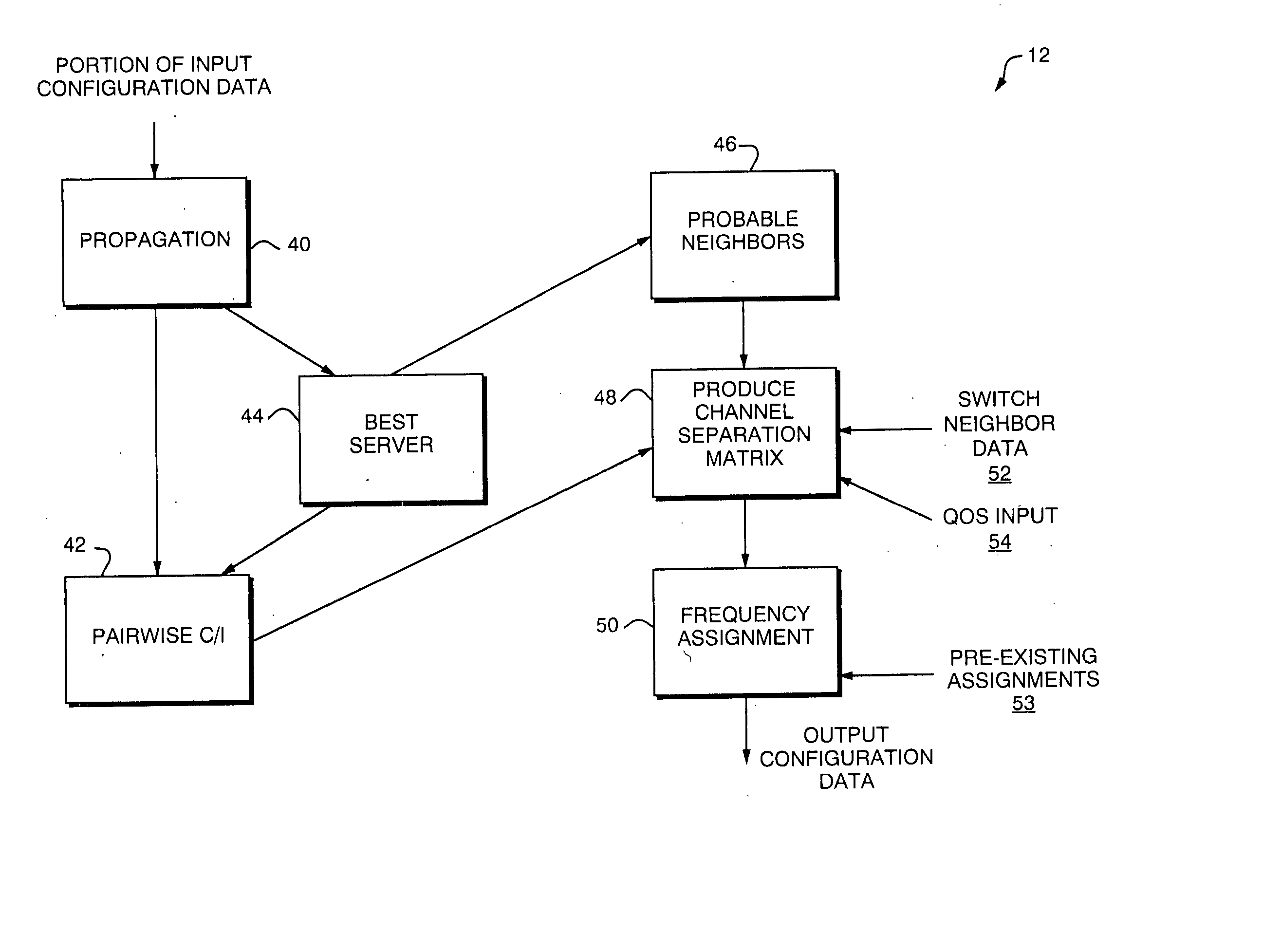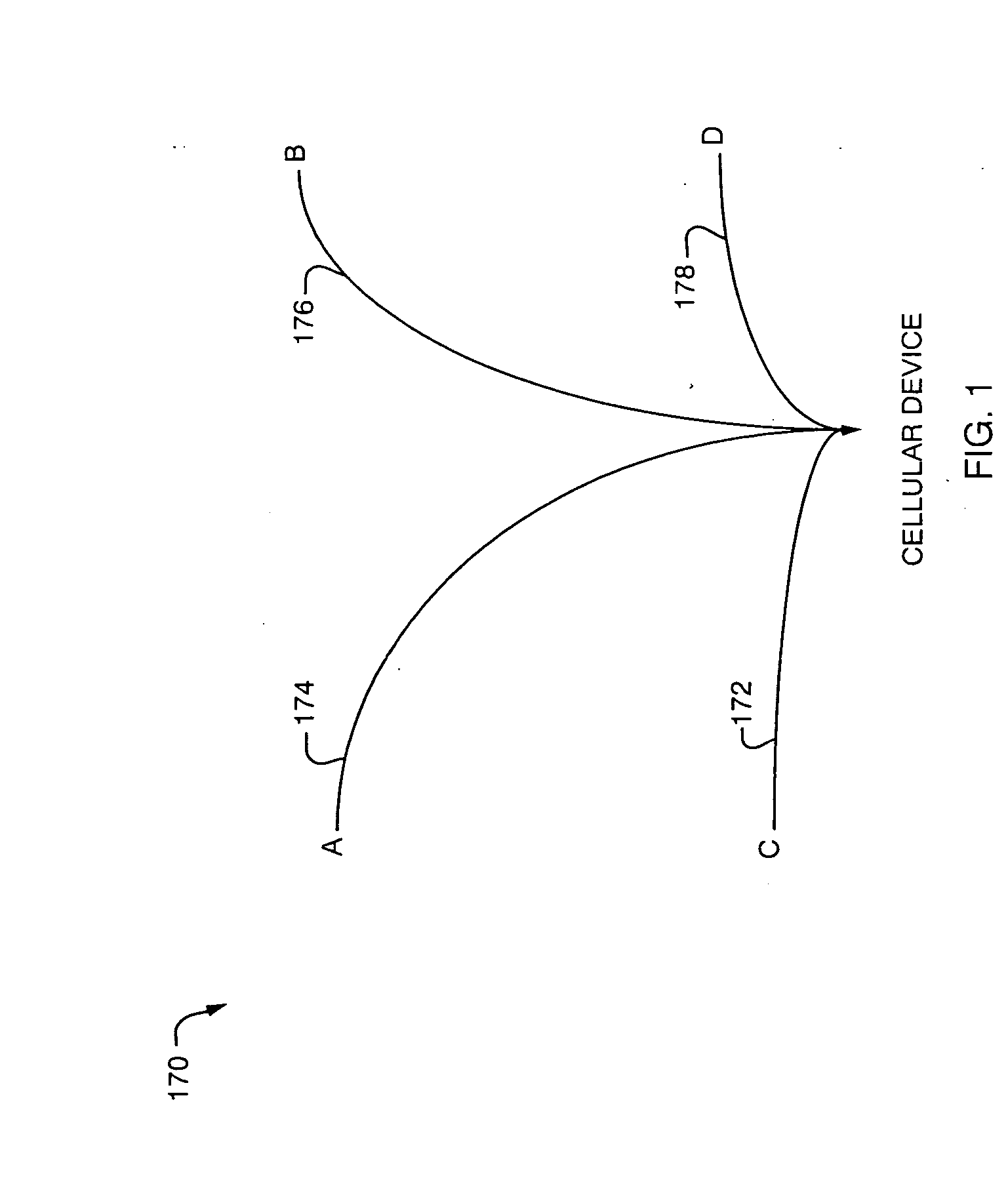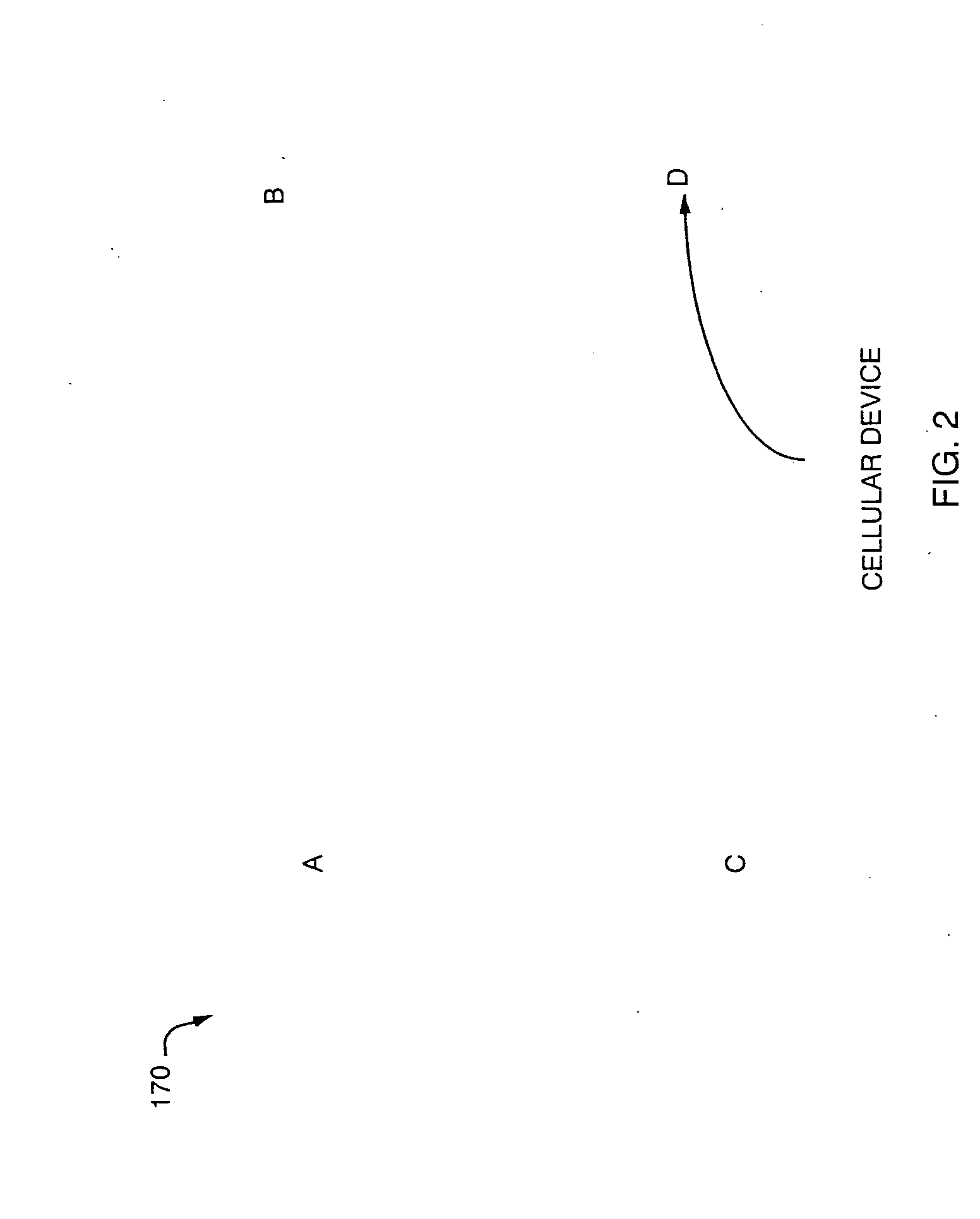Methods and techniques for penalty-based channel assignments in a cellular network
a technology of cellular network and channel assignment, applied in the field of cell network, can solve the problems of not being assigned the same frequency, affecting the operation of the system, and limiting the number of frequencies or channels
- Summary
- Abstract
- Description
- Claims
- Application Information
AI Technical Summary
Benefits of technology
Problems solved by technology
Method used
Image
Examples
Embodiment Construction
[0042] Referring now to FIG. 1, shown is an example of an embodiment of a system of a cellular network. The system 170 includes four sectors or base stations A, B, C and D. Shown in FIG. 1 is the operation of transmission within the system 170 when a cellular device is turned on. The signals 172, 174, 176 and 178 are transmitted by each of the sectors or base stations to the cellular device. Generally, the cellular device turns on and “listens” for signals 172-178 as transmitted from each of the sectors.
[0043] It should be noted that the cellular device may include, for example, a cellular telephone or other device which transmits signals in a cellular network. Each of the sectors A through D have stations that operate within the cellular network 174 for transmissions between the cellular device and the sectors, such as making telephone calls from a cellular telephone.
[0044] It should be noted that other embodiments of a system 170 may include more base stations and sectors, as we...
PUM
 Login to View More
Login to View More Abstract
Description
Claims
Application Information
 Login to View More
Login to View More - R&D
- Intellectual Property
- Life Sciences
- Materials
- Tech Scout
- Unparalleled Data Quality
- Higher Quality Content
- 60% Fewer Hallucinations
Browse by: Latest US Patents, China's latest patents, Technical Efficacy Thesaurus, Application Domain, Technology Topic, Popular Technical Reports.
© 2025 PatSnap. All rights reserved.Legal|Privacy policy|Modern Slavery Act Transparency Statement|Sitemap|About US| Contact US: help@patsnap.com



